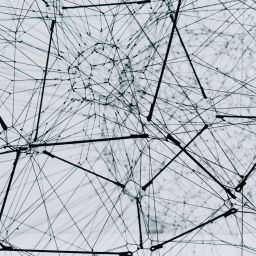One of the most exciting trends in USAID education funding in recent years is a growing emphasis on technical assistance and system-strengthening in project designs. The goal is to help Ministries of Education around the world improve their internal capacity to delivery educational services rather than developing and implementing services directly. This often includes policy and planning but can also include assistance for talent development, human resource policies, operational systems, management systems, digitization, decentralization of ministerial responsibilities, and monitoring and feedback systems.
These kinds of support activities are not new. In fact, system-strengthening has always been central to other donor-funded education projects, such as those supported by the World Bank. But system-strengthening seems to have become more central to USAID support, and for good reason. The task is to help set them up for greater success.
The idea of a system-strengthening approach is appealing. In the best-case scenario, the project brings expertise and a breadth of experience in different contexts to help identify needs; introduces a variety of options for addressing the challenge; collaborates with Ministry officials on the best approach for the situation; and helps create the tools, processes, and systems to improve the quality and efficiency of services. The result is a product that the Ministry can sustain over time.
This approach contrasts with the direct services model, in which the project not only helps to design the interventions but is also largely responsible for its implementation. Direct services can yield more successful results in the short run, as the project team has substantially more control over services. This approach, though, requires substantially more person-power and can be more difficult to sustain the long-run, especially if the activities are not integrated with regular Ministry processes early in the project period.
Our view is that technical assistance and system-strengthening activities can be better investment than direct services for Ministries that are able to deliver educational services for their children at least at a modest level. However, success requires a different set of sensitivities and disciplines among all participants. We suggest three here:
First is setting reasonable goals. Given the intensive interest in USAID over the past decade in student learning outcomes, most USAID education projects continue to include learning targets as expected deliverables. The challenge is that most system-strengthening activities are not designed to have a direct effect on learning outcomes, so attempts to measure project success at the student level may be doomed to fail. Even under the best of circumstances, one should not expect an immediate change in teaching and learning after the completion of a successful system-strengthening activity. Diffusion take time. It is therefore essential to consider activity goals that are more in line with the direct outcomes of system-strengthening activities.
Second is maintaining project focus. Our experience is that it is easier for system-strengthening activities to derail than direct-service activities. One reason is that direct-service projects can be so resource intensive that stakeholders may be more reluctant to change course. It is much more difficult, for example, to stop a large-scale teacher professional development activity than an educational policy reform effort. This is even true if the professional development activity was initiated a few years earlier by a different group of officials or stakeholders. Public expectations, momentum, and sunk costs are powerful forces for direct efforts.
In contrast, it is easier to dismiss a system-strengthening effort as someone else’s priority. Even when there continues to be good will for a system-strengthening activity over time, more urgent issues can overwhelm participants. This is particularly true for Ministries that have limited personnel themselves for there to be pressure to use project resources to plug holes or shift priorities instead of keeping the focus of the initial technical-assistance plan.
It takes a shared commitment from USAID, the Ministry of Education, and the project team from the outset to maintain a focus on system-strengthening activities over a longer period of time as well as fortitude among all partners to help each other stay on track. Otherwise, the risk is for the activity to become less strategic and, instead, turn into a reactive resource.
Third is anticipating the change process. All stakeholders must appreciate that system-strengthening is just as much about changes in attitudes and behaviors as it is about technical solutions. There are historical, circumstantial, and political reasons that Ministries of Education evolve the way they do. Constituencies develop around ideas and approaches, and we all tend to cling to historical ways of working for many reasons.
These can include confidence, comfort, pride, and ownership. Any plans for changes must also include political analyses and, ideally, strategies for building all participants’ enthusiasm and commitment—especially potential opponents. USAID, Ministry champions, and project staff must build tolerance, patience, and uncertainty into activity plans so they can anticipate and respond to challenges as they arise instead of perceiving them as obstacles or failures.
We look forward to digging into these recommendations in more detail in future articles. Please stay tuned, and let us know if you would like to discuss system strengthening further.














Thanks, Cory, for sharing your experience and knowledge for the betterment of international development work. i think this is a great beginning to an important ongoing discussion about how larger government agencies need to look at more sustainable approaches to their involvement. Looking forward to read more.
Thanks very much, Mahesh! Please let me know if you would like to collaborate on a future article. It would be great to share your expertise in book development with a wider audience! Best regards.
Thank you for this insightful article, Cory. Your recommendations for improving USAID system-strengthening projects are both timely and crucial. Emphasizing the importance of setting realistic goals, maintaining project focus, and anticipating the change process provides a comprehensive framework for sustainable development. I particularly appreciate the balanced approach you suggest between technical solutions and the necessary changes in attitudes and behaviors.
We had a similar experience with the USAID-funded Gateway to Education project in Yemen, where the Ministry of Education fully endorsed all the points you highlighted.
Thank you, Ahmed. As someone who had the pleasure of seeing the implementation of the Yemen Gateway to Education project from a distance, I was very impressed with your team’s collaboration with the Ministry and success in producing important content together! An inspiration!
[…] my first article for Doab Development, “Three recommendations for improving USAID system-strengthening projects,” I wrote about the increase of USAID system-strengthening education projects in recent years and […]